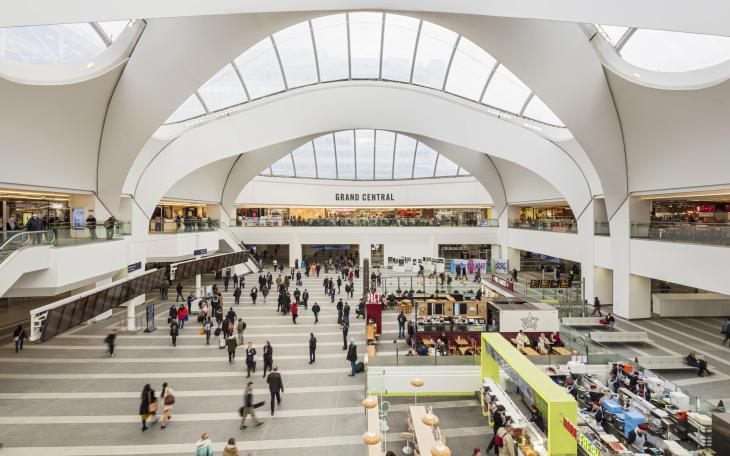Property and Places: Birmingham New Street Station

There are few buildings which make me emotional, but Birmingham’s iconic New Street railway station never fails to make me tingle, filling me with pride every time I walk onto its vast light-filled concourse.
I moved to Birmingham in 1997 as a student and was greeted by the station’s former iteration – a dark and shabby 1960s monstrosity. Even devotees of the era’s brutalist architecture didn’t shed a tear when its transformation was announced in the early noughties.
Although it was the busiest station outside London, it was only built to accommodate 60,000 people per day and, by 2015, was regularly having to close its doors as up to 150,000 people clamoured to reach their trains.
The cheerless concourse was sandwiched between two concrete slabs covering the subterranean railway lines and platforms. Adding to this architectural eyesore, the unattractivePallasades shopping centre was thrown atop once the air rights were sold off - the icing on this brutally ugly cake. In 2003, the station was voted the second ugliest building in the UK, one that gave a terrible first impression of England’s second city.
Back in the Victorian era, the vista could not have been more different. Two stations were divided by Queen’s Drive, replacing the original Birmingham station on Curzon Street (which is now being resurrected as part of the HS2 project).
When the main station opened in 1854, it boasted the largest arched single-span iron and glass roof in the world. Sadly, this wonderful specimen of Victorian architecture suffered irreparable damage during the WW2 Birmingham Blitz. The platforms were covered with temporary materials and then shrouded in concrete slabs, dooming passengers to 50 years of gloom until the new station was unveiled in 2015.
The £750m transformation of Birmingham New Street changed the face of the city completely. The concourse, now five times the size of that of London Euston, is flooded with natural light from the breath-taking atrium, creating a spectacular first impression of the city. It opened up the city centre, its permeation allowing people to move freely from one side of Birmingham to the other, and it has acted as a catalyst for both regeneration and economic growth.
I worked on the project in it’s final two years and I am still filled with pride every time I glimpse its shiny facade. Some consider it architectural marmite, but I love the use of ETFE to fill the whole space with natural light, the use of architectural fabric to create the smooth lines of the internal arches and the sweeping curves of reflective exterior panels. It makes me proud of the city I have lived in for 25 years and I never fail to smile when my children call it “mummy’s station”.









